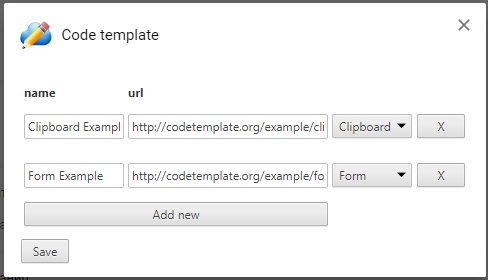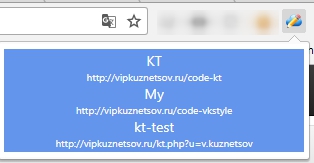Form template
File Structure
The destination file is json. The text contains code templates (commands), divided into groups and subgroups
The template must belong to the group and optionally belong to the subgroup. If the template does not have a subgroup, then it is displayed only when the group is selected. If the template has a sub-group, it is displayed only when the group and subgroup are selected. A template refers to a group or subgroup, after which it is located in the text below.
"groups": [
{
"id": "general",
"name": "General"
},
{
"id": "gr_2",
"name": "Group 2"
}
],
"subgroups": [
{
"id": "subgr_1",
"group_id" : "general",
"name": "Subgroup 1"
},
{
"id": "subgr_2",
"group_id" : "gr_2",
"name": "Subgroup 2"
},
{
"id": "subgr_3",
"group_id" : "gr_2",
"name": "Subgroup 3"
}
],
Groups and subgroups have a single namespace and must have unique names. The form refers to a group or subgroup by its unique name.
{
"name": "facebook",
"parent_id" : "subgr_1",
"url": "https://www.facebook.com/",
"form_pattern": "#login_form",
"fields": {
"email": "example@google.com",
"pass": "123452"
}
}
The application uses jQuery, so to specify the form, you need to use the syntax in the form_pattern field. If there is only one form on the page, you can use the value of "form". The field property contains an array object with properties that are equal to the names of the form's inputs, and the value of the value that you want to substitute
In order for an application to download a file with commands (source), it's enough to specify it in the settings. The number of sources is unlimited.

In order to select another template file, simply click on the name of the file

Please, do not forget that you can generate template templates programmatically and use unlimited number of links for the user